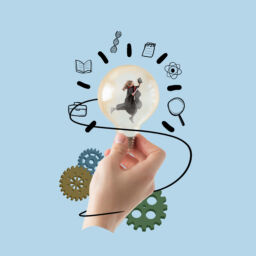
Do you have any idea what mobile application development is? How is it related to your computer science career? This article gives you an insight on how mobile development apps contribute to the businesses and its important frameworks and their benefits.
You may learn these concepts in your four-year degree course at the best CSE college Coimbatore. You can find the definitions and their benefits to make it clear that mobile development also plays a great part in a web developer career and not just online courses would help you to understand the fundamentals with the degree courses. Let’s begin the introduction of cross platforms,
Cross-platform Framework Benefits and Challenges:
The process of developing mobile apps for multiple platforms is constantly changing as new technologies emerge. It is becoming more dynamic and appealing to developers, primarily as a result of the rise of near-native mobile app development frameworks.
Cross-platform mobile development frameworks are used by mobile engineers to create native-looking applications with the same codebase for Android and iOS. Shareable code is one of the main benefits this approach has over local application improvement. There is no need to write code for each operating system, which allows mobile developers to speed up the development process and save time by using a single codebase.
Benefits:
- Making separate local applications for every stage is costly, while a cross-stage application utilizes a solitary shareable code, which assists you with keeping it affordable for you.
- Costs are diminished since just a single group of software engineers is expected to create and maintain an application.
- A basic understanding of standard languages is sufficient; development tools will carry out the remaining tasks.
- Cross-stage applications have a local look and feel, which is perfect for the client experience.
- Cross-platform development is certainly the best approach for organizations that need to foster basic applications, draw in clients of different cell phones, and deliver the item to showcase faster at a lower cost.
Challenges:
- The more complex code of close local and crossover arrangements joins local and non-local parts.
- Cross-platform applications (particularly mixture applications) can’t uphold all the local capabilities and highlights of cell phones, like high-level illustrations and activity or 3D impacts. As a result, the app’s design suffers and its functionality is limited.
- At the point when Google and Apple add new elements to Android and iOS stages, local arrangements can quickly begin utilizing them.
- Hybrid apps, on the other hand, must wait until these updates are adapted to the cross-platform framework chosen. So, the updates may be delayed because of these.
iOS and Android Platform: Mobile app design differentiation
Screen Sizes: The iOS platform controls each gadget and screen size as developers design various layouts to foresee how the device can be used, appeared and felt. When it comes to designing Android device screen sizes, it is impossible to test products on everyone in the allotted time and budget because there are so many viewports.
Navigation: One of the most significant differences between the iOS and Android user experiences is navigation. First, iOS does not have the always-visible bottom navigation found on Android devices. Android’s base route allows users to view all applications, get back to the home screen and return to the previous screen. On iOS, there is no re-visitation of the home or back button, yet users can see all open applications by swiping up from the base left.
Font: San serif system fonts are used differently on iOS and Android; in any case, the style and weight are basically the same. For example, iOS: San Francisco; Android: Roboto. Developers don’t need to utilize these framework font styles; however, many do to compete with the stage’s user experience and enhance execution.
Interface: Android’s date pickers feature a standard calendar interface, whereas iOS’s date, month, and year are represented by three scrolling wheels. There are exemptions for these standards. When it comes to date ranges, iOS frequently uses a calendar, while scrolling wheels are used in some time selectors on Android.
Alerts Dialogues: Alerts are modals that provide crucial information to interrupt tasks, typically with two CTAs asking users to confirm or cancel an action. For instance, if the client is certain that, they need to erase something. These models are referred to as Dialogues by Material Design and Alerts by HIG. Every stage has explicit rules and life systems that originators should observe.
I hope, you can get insights into how mobile app designs vary across devices and operating systems and how developers need to prepare and satisfy the user experience. These features are important for developers while designing business mobile apps. The user experience is a major part of today’s online business and how you carry it forward determines success. Though the best engineering colleges in Tamil Nadu offer these practical sessions in your degree courses, here are some of the important metrics you need to consider while you’re choosing your career as a developer.












